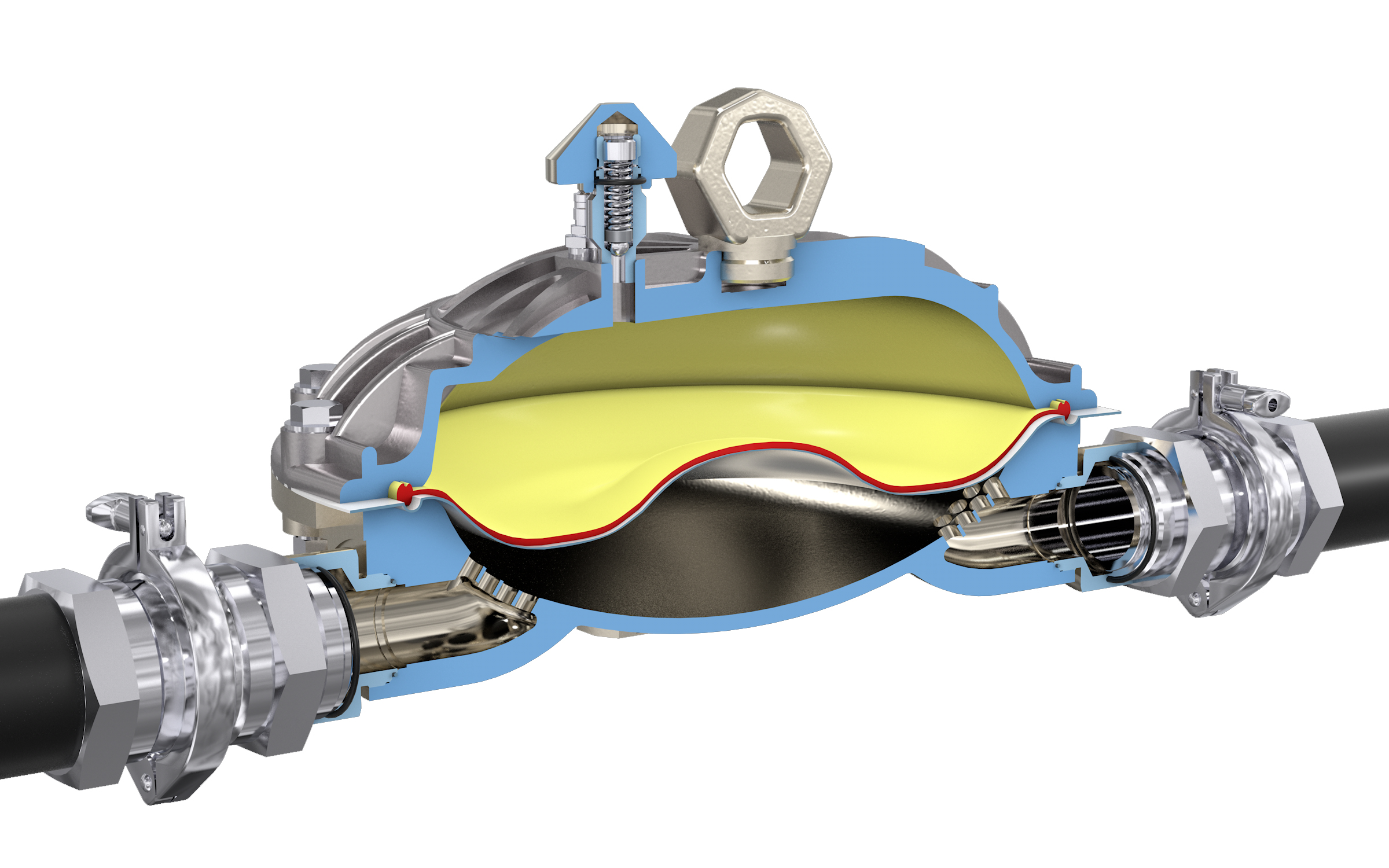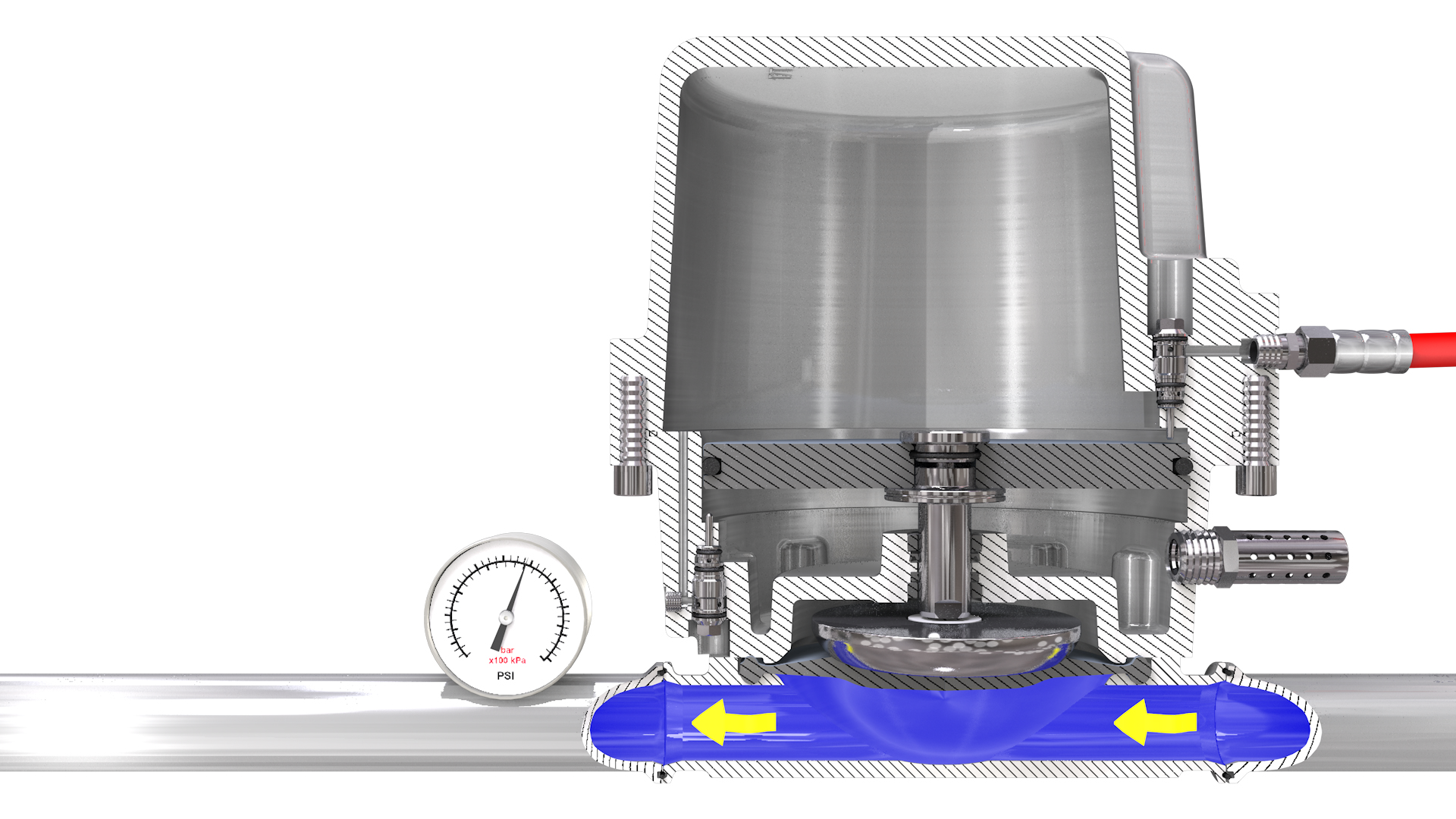Passive vs. Active Surge Suppressors
Also called “surge tanks,” surge suppressors remove pressure pulsations from paint circulation systems. This video shows how surge suppressors work and explains the difference between passive and active surge tanks.
What are surge suppressors?
Also called “surge tanks,” surge suppressors are used in paint circulation systems to remove pressure pulsations from the supply pump.
During a pump changeover, a very brief but undesirable pressure pulsation occurs. Adding a surge suppressor can eliminate the pressure pulsation.
How does a passive surge tank work?
To install a traditional passive surge suppressor, we need to charge the air side of the suppressor when the fluid side is empty. Charge the air side through the port until the air side is two-thirds of what the fluid pressure is going to be.
When we turn on the fluid pressure and adjust it up to the operating pressure, the two pressures equalize. This means the suppressor is working at its peak performance.

If two-thirds of the charge pressure is greater than the available air supply pressure, a nitrogen supply is required to build to the right pressure.
If the charge is not two-thirds of the operating pressure, the suppressor does not perform properly.
If the charge is lost over time or a fluid pressure changes due to a system requirement change (for example, a non-production motor sleep mode), the suppressor will not perform properly unless a manual change is made to the air side.
Grates at the inlet and the outlet are designed to prevent the bladders from pushing into the inlet and outlet areas when the suppressor is not charged properly. This is not ideal for fast and efficient flushing.
How does an active surge tank work?
To install an active surge suppressor, we connect an air supply line directly to the suppressor.
An active surge suppressor uses a piston and a diaphragm. This gives us a three-to-one ratio. We're also using two poppet valves: the inlet puppet valve and the exhaust puppet valve.

When fluid pressure increases in the fluid section of the dive of the diaphragm area, it's going to push the piston up. When the piston engages with the poppet valve, it's going to open the air passage and it's going to fill the chamber with air pressure.
Because of the three-to-one ratio, when this air pressure is one third of the pressure of the fluid pressure, it's going to push that piston down. Now this piston is going to float between the two poppet valves, absorbing those pressure pulsations from the fluid side.
If fluid pressure drops, due to a system requirements change, such as sleep mode or non-production mode, then the piston is going to drop. When the piston drops, it's going to engage the exhaust poppet. When the exhaust poppet opens the air pressure in the air chamber is going to evacuate out. And it's going to continue to do that until again the piston rises up. And it's now one-third the pressure of the fluid, again absorbing any of the pulsations coming through on the fluid side.
Due to the design of the diaphragm, a graded inlet and outlet are no longer required, making the active surge suppressor very efficient for flushing.
If the diaphragm ruptures, fluid will fill in behind the diaphragm. Then the fluid will travel up and out a clear tube that provides a visual indicator that the diaphragm is ruptured. The fluids continue on to the vent. The fluid will cause the ball checks to float up and seat, capturing the fluid and containing it within the surge suppressor. At this point, the surge suppressor is no longer functioning properly, and the diaphragm needs to be replaced.
The design of the active search tank allows for installation of the fluid section to be in either down or the up position. The smaller footprint also allows for mounting directly onto the pump outlet, the wall or the floor when using the proper mounting hardware.
The highlight of the active surge suppressor is the fact that it automatically adjusts itself for peak performance in changing conditions, so the operator does not have to manually make any adjustments.
Free Webinar
Surge Tank Tips and Tricks
Surge suppressors can reduce pulsation for consistent material delivery and uniform spray pattern. See how they work and learn product service techniques, during this 16-minute on-demand webinar.
Related Articles
How to Lower Compressed Air Costs in Your Factory’s Paint Mix Room
More efficient agitator motors and pumps can cut energy bills – and improve the environment.
How to Make Your Factory Paint Mix Room Industry 4.0 Ready
Advanced control and interconnectivity are key components to making factory paint mixing rooms Industry 4.0 ready.





